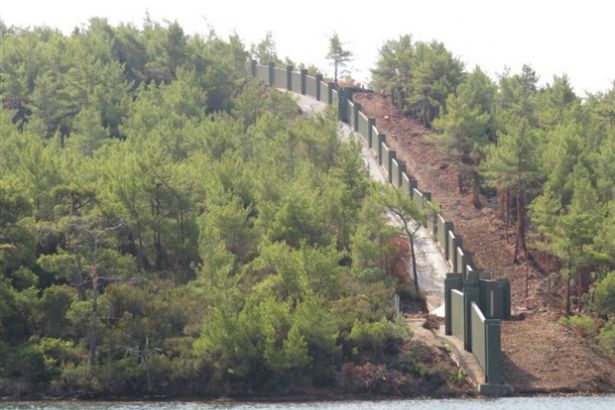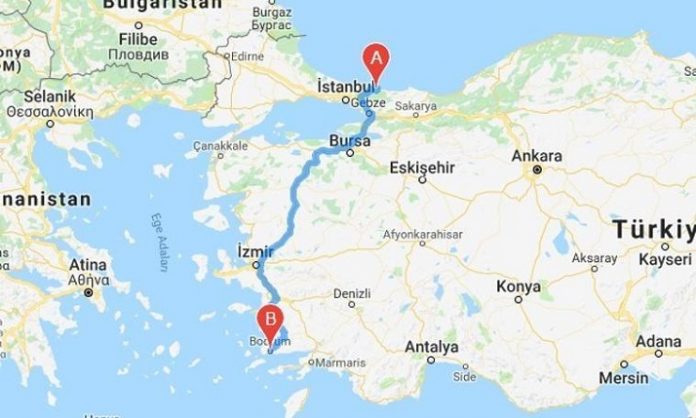120,000 tons of sand carried from 735 kilometres away for Erdoğan's summer palace

As the construction of President and AKP Chair Recep Tayyip Erdoğan’s summer palace in Turkey’s southwestern province of Muğla is continuing, millions of public funding have been wasted.
The sea has been started to be filled in in Okluk Bay in the Aegean resort of Marmaris in order to make artificial beaches and quays for the summer palace with 300 rooms constructed.
The project includes demolishing the small pier in front of the summer place and the construction of two quays that allow huge yachts to dock and a beach in the shape of three crescents. One of the quays will be 170 meters long and the other 50 meters long. For three artificial beaches at the shape of the crescent, 10 thousand 966 square meters area will be filled.
According to daily BirGün, 120 thousand tons of sand carried by vessels from Şile, 735 kilometres away, were sprayed to the beaches and polluted the sea. The filling will disrupt the marine ecosystem.

The budget of only this part of the project is 30 million TL ($6,384,450.00). The total cost of the palace still remains uncertain. The cost of the Presidential Palace in Ankara had been declared to be at least 4.5 billion TL ($957,667,500.00) by the Chamber of Architects of Turkey, despite the fact that the AKP government announced the project cost as 1 billion 370 million TL.
Muğla Environmental Platform (MUÇEP) struggling against the nature destruction in Okluk Bay, noted that the giant tankers entered the bay and then sand lumps formed on the surface of the water. Stating that the damages caused by the construction technique of the Palm Island in Dubai are known, the MUÇEP members pointed out that the same method was used for artificial beaches in Okluk Bay.
Giving detailed information about the construction process, Environmental Impact Assessment (EIA) report says "It is likely that there will be some loss of habitat along with the filling activities to be performed at the sea. Since species of aquatic fauna are relatively active, they will leave their habitat during construction and will go to more convenient areas”.
50 thousands of pine and sweetgum trees, which are under protection, were cut for the roadwork at the bay.
MUÇEP emphasized that this destruction is causing irreversible damage.




